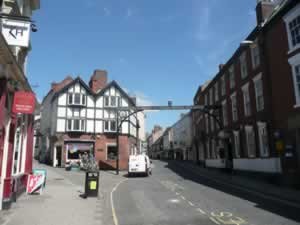Ashbourne
Ashbourne is a small market town which lies in the county of Derbyshire in the English East Midlands. The town lies in a scenic and charming landscape that is known as the Derbyshire Dales. The town is indeed often referred to as the ‘gateway’ to Dovedale.
It is thought that people have settled in the Ashbourne area since at least Saxon times. During its early years Ashbourne was originally known as Essiburn which is the name that the town was given in the Domesday Book. The town was large enough at this time to be recorded as having a church and a priest.

The town was given a charter to hold its own market in the mid 13th century and it became a Royal Borough a few decades later. The market still runs in the town a couple of times a week. One of the town’s main claims to fame came in the 1740s when Bonnie Prince Charlie passed through the town during the Stuart rebellion. He choose Ashbourne as the place from where he would declare his father to be king of England. From the 19th century onwards Ashbourne became a fairly important coaching stage. The town was located close to six or so significant coaching roads which made it an ideal place for travellers to stop.

Most people who have heard of Ashbourne have done so because of an annual football match which is held in the town. This is known as the Ashbourne Royal Shrovetide Football Match. The match here is composed of two teams as is usual in football but basically half the town is on one side and the other half of the town is on the other. The sides here are known as the Up’ards (people from the north side of the river) and the Down’ards (people from the south side of the river). The goals in the match are around three miles apart and the pitch is two miles wide. Although the match is called a football match it has very distinctive rules of its own. It is thought that this match has been played in Ashbourne since at least Elizabethan times.

Visitors to Ashbourne often use the town as a base for walking, hiking and cycling due to its location. Local walks in the town area include the Tissington Trail. The town church (St Oswald’s) is also worth a visit. It is thought to stand on the site of a Saxon church and a Norman crypt. The church has a historically interesting 13th century font.
Links:
